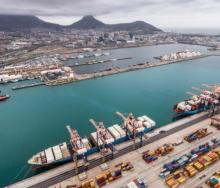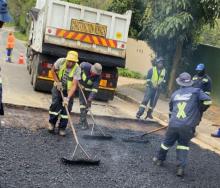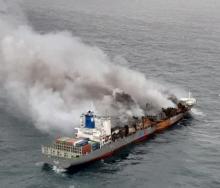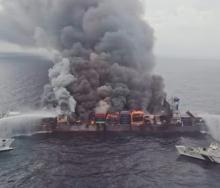Live-feed monitoring from on-board cameras could fill the gap for road freight fleet managers where South African authorities have been found wanting, Webfleet Solutions has reported.
This has become especially apparent from a recent survey conducted by international drivers’ educator Zutobi, in which South Africa was flagged as the most dangerous country in the world to drive in.
According to Zutobi’s findings “there are an estimated 22.2 road traffic deaths per 100 000 of the population”.
“The maximum motorway speed limit in South Africa is 120 km per hour, which is not far from the 110 km/h limit in the safest country to drive in, Norway.
“However, just 31% of front-seat passengers in South Africa are estimated to wear a seat-belt, while in Norway the figure is 95.2%.”
With such appalling road safety figures, and considering the function of live-feed monitoring in promoting compliance with traffic regulations, it is astonishing to think that the Johannesburg Metro Police Department earlier this year announced that motorists who had been exceeding the city’s speed limits had not been fined for almost a year for infringing the law.
“That’s because the city hasn't had any functioning speed cameras since May 2021,” Webfleet said.
The company’s sales director, Justin Manson, added: “While Johannesburg motorists who have broken the law are probably off the hook, these offline speed cameras mean that road users no longer have a deterrent to help them avoid reckless driving.”
But this doesn’t have to be the case for fleet managers – a truth underscored by a recent case in which a coal truck driver was arrested and subsequently fired after reckless speeding and blind-bend overtaking on the N11 mountain-pass highway between Volksrust and Newcastle.
The incident, which was widely circulated on social media, showed the extent to which the actions of one person – in this instance a truck driver, no less – could endanger the lives of unsuspecting motorists.
Much of the outcry over the truck, which often swerved at high speed into the oncoming lane, was caused by fast-spreading public consensus that something should be done about the driver.
When Pieter Kwakernaak, operations director of Ni-Da Group, confirmed that it had fired the driver, he mentioned that, even without the outcry and social media palaver, the incident would have been flagged to its operations room by the on-board camera system.
He explained that each rig run by Ni-Da is monitored by at least three cameras, constantly feeding visuals through to a monitoring room and flagging bad driving on a need-to-know basis.
Webfleet said: “Fleet managers and drivers can create safer driving conditions by pairing telematics technology with artificial intelligence-based vehicle video cameras. This technology identifies risky driving and delivers real-time audio and visual warning alerts when the driver speeds, brakes or steers harshly.
“It also sends feedback to the driver when engaging in distracted driving behaviour that endangers the lives of other road users.”
Manson added: “Drivers navigate countless factors on our country's roads, and offline speed cameras are just another item on that list.
“As a result, fleet managers are under immense pressure to protect employees while making sure they drive responsibly. Thankfully, fleet managers have access to countless solutions that encourage safe driving behaviour and protect South African road users."













